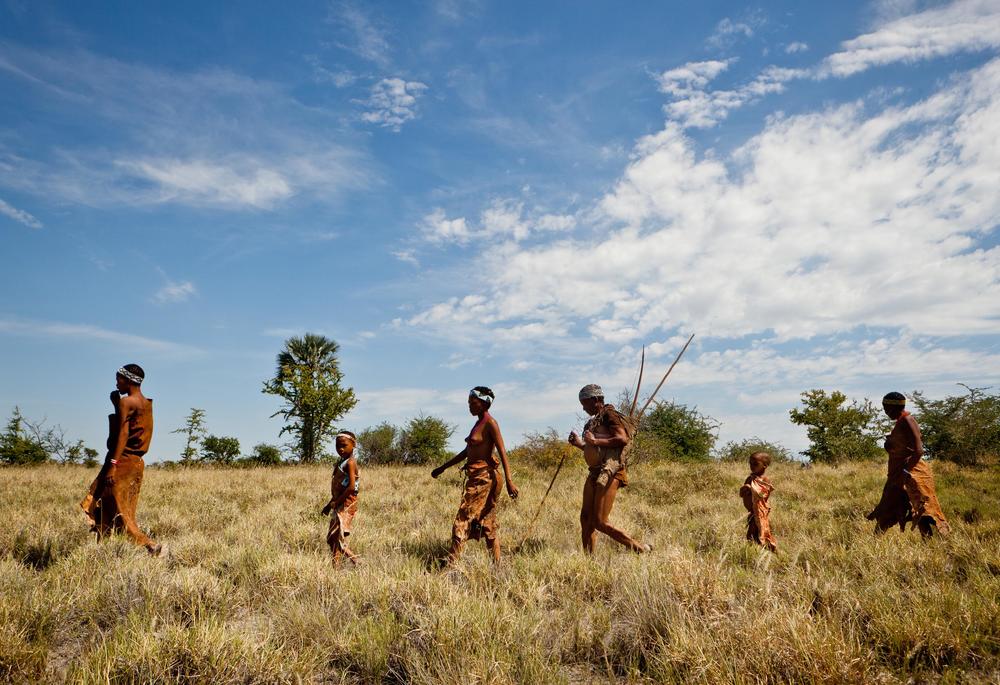
BY CALVIN MANIKA On the periphery of Tsholotsho in western Zimbabwe lies Gulalikabili village and about 60 kilometres to the east is Mtshini Village.
The villages are home to the Tshwa (Tjwa) people, known locally as the Khoisan or San community.
The Tshwa in Tsholotsho are one of the two indigenous tribes in Zimbabwe, the other one being Doma in the eastern parts of the country.
With an estimated population of 2,800 people, the Tshwa are now accelerating their demands for the recognition and restoration of rights to their ancestral land which they are helplessly watching as it is degraded mainly by human activities.
A visit by Community Podium to Tsholotsho, led to the discovery that the main challenge facing the San community was lack of rights to land as an indigenous tribe which they can live on and protect.
The vast majority of indigenous peoples and local communities (IPLC) across the world still do not possess legal title to their lands, which they have occupied in some cases for thousands of years.
Head of the Tsoro-o-tso San Development Trust (TSDT), Davy Ndlovu said indigenous people are equally effective in delivering conservation and sometimes more effective than in government-managed protected areas.
“Since the banning of hunting and gathering, the relationship between government and indigenous communities has strained,” Ndlovu said.
- Chamisa under fire over US$120K donation
- Mavhunga puts DeMbare into Chibuku quarterfinals
- Pension funds bet on Cabora Bassa oilfields
- Councils defy govt fire tender directive
Keep Reading
“The San in Zimbabwe are still struggling with adaptation, and the situation is worsened by name calling and statements like ‘indigenous peoples are primitive, backward and unsophisticated.”
Ndlovu says things have changed since the government took control of all their land and the indigenous group of the Tshwa people remain unheard.
“The difference is that hunting and gathering is still happening but through concessions and hunting permits,” he said.
“Few are into subsistence farming but mostly do organic farming using locally available manure.”
After being relocated from the Hwange National Park in the late 1920s, the vast majority of Tshwa people today are subsistence farmers.
Many Tshwa supplement their subsistence with gathering of wild plants and insects.
They are popularly known as the “bush men” having lived most of their lives as hunters and gatherers.
Educationalist and politician in Tsholotsho South constituency, Tapson Nganunu Sibanda, said the relocation of the Ndebele and Kalanga people into the western parts of the land has always had an effect of pushing the San further west into Botswana.
“However, a good number still remain in the Western parts of Tsholotsho and Plumtree,” Sibanda said.
“Some are now into subsistence farming but there are others who still live a nomadic life in the Gariya area of Tsholotsho and Hwange game reserve.’
The last three decades in the western parts of Zimbabwe have seen loss of biodiversity due to deforestation, poaching and pollution which the San refuse to take responsibility for.
“Our forefathers lived in this area for years interacting with nature, we learned from them and lived in harmony with other species within the ecosystem.
“It is only now that we hear of people killing elephants and clearing forests for farming. It is not us,” said Mduduzi Mtshini.
Between July 18 and 23, 2022, Rwanda hosted the first International Union for Conservation of Nature (IUCN) Congress on Protected Areas in Africa (APAC), which attracted more than 2000 delegates under the theme “For People and Nature.”
This resulted in the adoption of the “Kigali Call to Action”.
In the declaration participants called for special support for Africa’s indigenous peoples to preserve the wisdom, traditional knowledge, and customary approaches that could enable effective conservation of nature, livelihoods and human well-being.
Zimbabwe indigenous groups were not represented at the International Union for Conservation of Nature (IUCN) Congress on Protected Areas in Africa (APAC) in Kigali.
“Given an opportunity to attend such an event, our demand would be a call for conservation management authorities to prioritise the inclusion of indigenous minorities in decision making processes and the recognition of indigenous knowledge systems,” Ndlovu said.
Indigenous people are central to any work about restoration, to address climate change or biodiversity loss.
The UN Convention on Biological Diversity and Indigenous Land Rights which called for the full recognition of the rights of Indigenous Peoples and Local Communities (IPLCs) over territories.
In the context of the negotiations for the Post-2020 Global Biodiversity Framework, a major worldwide agreement expected to be signed in Canada in December, there is an active call for rights-based demand from Indigenous groups.
Among the targets that may be in the Framework is a commitment to protect 30% of Earth’s land and oceans by 2030, the so-called 30×30 target.
A report released in April by The Nature Conservancy titled Best Practice in Delivering The 30×30 Target points that, there is evidence that areas under the control of Indigenous Peoples or other community management undergo less vegetation change such as deforestation or forest degradation than elsewhere, and sometimes do better than state-run protected areas.
“For example, a study of community forests in 51 countries found environmental conditions increased in 56% and decreased in 32%. Adaptive, place-based, and local governance of resources provides a powerful mechanism for achieving effective and socially just environmental stewardship,” the report noted.
A 2020 Indigenous World Report 34th Edition said green grabbing is a major challenge facing indigenous groups.
Green grabbing refers to land being sequestered for environmental purposes, and access for local communities being restricted in the name of conservation.
Green grabbing in Tsholotsho has excluded and displaced Indigenous Peoples from their ancestral land.
Conservationists say it is unlikely that global climate and biodiversity targets of 30×30 will be met without the conservation of forest systems that remain free from extensive industrial and intensive agricultural operations.
Ndlovu explained that, in Zimbabwe, despite the recent assistance by the government in some socio-economic areas, the Khoisan community have been historically excluded from important discussions and decisions about the lands they inhabit and the natural resources found there.
“We have the Campfire programme and local authorities would not promote the abandonment of such a programme because this is how they survive. Otherwise it would be great for the government to designate such areas as protected areas,” he said.
Zimbabwe has not yet signed the only international human rights convention addressing Indigenous Peoples: ILO Convention 169 on Indigenous and Tribal Peoples of 1989.
And the country has no specific laws on Indigenous Peoples’ rights in Zimbabwe. – Community Podium











